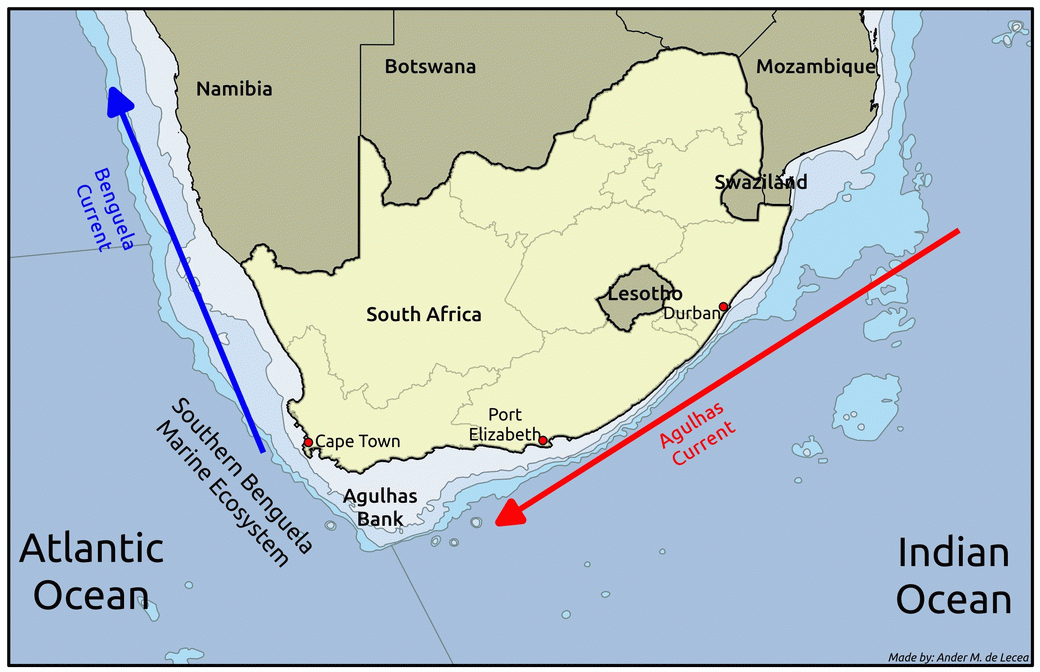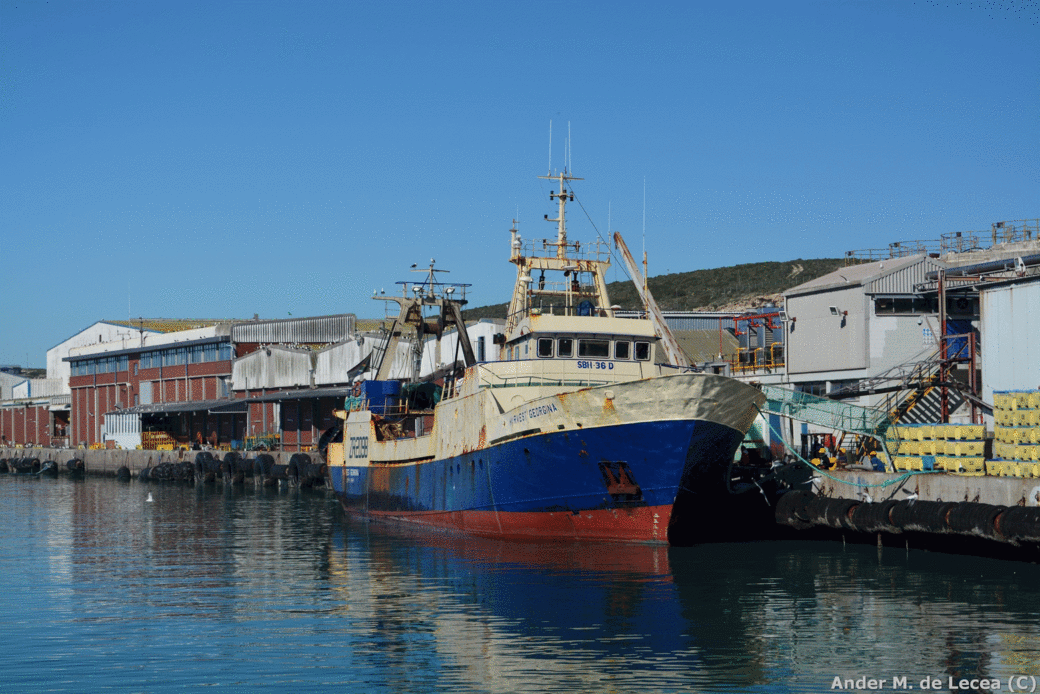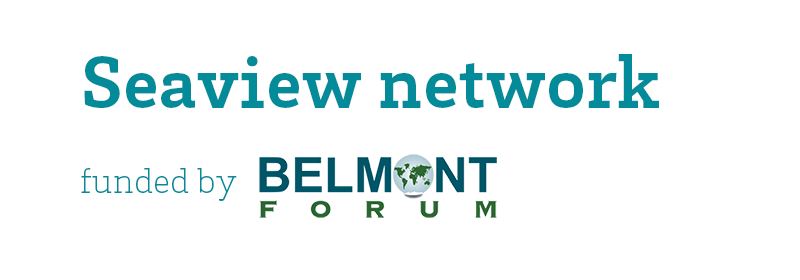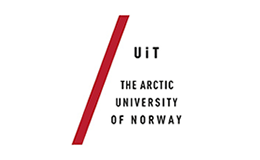Benguela upwelling
Benguela current is the strongest coastal upwelling system in the world. It is highly productive and supports a rich fishery with catches of rock lobster, cods, hakes and haddock, sardines and anchovies.


The Southern Benguela is a large marine ecosystem in the Atlantic Ocean off of the west and south coasts of South Africa, at the tip of the African continent. Although often better known to the global public for hosting the soccer world cup in 2010, South Africa could be equally famous for its richness of species and diversity of environments, on land and at sea. In biological terms South Africa boasts to be one of the global biodiversity hotspots, with large numbers of endemic faunal and floral species and a wide assortment of biomes. The marine environment is no exception to this, and the south coast of South Africa has a high endemicity. It’s important to look after our biological heritage, but South Africa also faces many of the challenges of a developing economy, such as high levels of poverty and unemployment, and food-security considerations, that can’t be ignored.
The Southern Benguela marine ecosystem supports South Africa’s main fisheries, e.g. for hake (Merluccius capensis and M. paradoxus), and small pelagics like sardine (Sardinops sagax) and anchovy (Engraulis encrasicolus) offshore, and coastal fisheries for Snoek (Thyrsites atun), Rock Lobster (Jasus lalandii) and Abalone (Haliotis midae). These fisheries are very important to small coastal communities by both providing food security and jobs, through individual catches or employment in larger fishing companies.
South Africa has large stocks of fish thanks to a process called upwelling. Prevailing winds, which are particularly strong in the summer, blow along the shore, and in connection with the earth’s rotation push surface waters away from the coast and draw cold, nutrient-rich waters to the surface. In the euphotic zone, the upper part of the ocean where sunlight penetrates, these nutrients are quickly used up by photosynthetic organisms and converted to biomass and ultimately food for organisms higher up the food chains. The abundance of nutrients means that there is high primary productivity – lots of production by the photosynthetic organisms. This forms the basis for a productive food-web on which the major commercial fish species rely. But long-term, large scale climate variability and change can have strong effects on upwelling ecosystems, and has already affected the fish species.

It is important to get a handle on what future changes might mean for the Southern Benguela ecosystem as well as its fishermen. To do this we use a variety of different (ecosystem and bio-economic) computational models of the Southern Benguela ecosystem and its fisheries to explore the effects of possible future changes (climate change and market related changes) on the (ecological) viability of certain attributes of the ecosystem and the (commercial) viability of major fisheries. Linked to this we can explore changes in the dynamics of food webs and fish stocks on the economics of related South African fisheries, including economic viability. For the present moment, the models are explorative and use informed scenarios. But it is our ambition to have the models updated in the near future to be able to run more realistic future scenarios. The overall purpose of our case study is to explore co-viability of fisheries under alternative management scenarios and different futures. To this end, as part of our research we have looked at how to conduct viability analyses in a systematic and repeatable fashion, and more importantly in a way that includes stakeholders as far as possible throughout the process and that focuses on communication.










